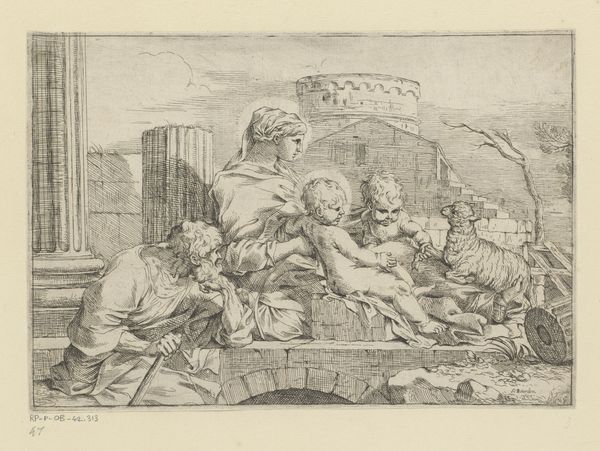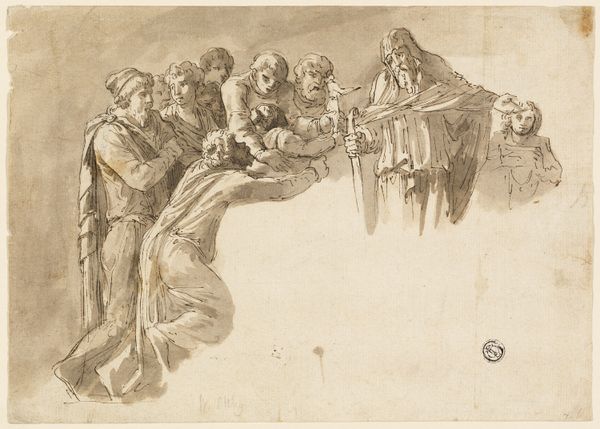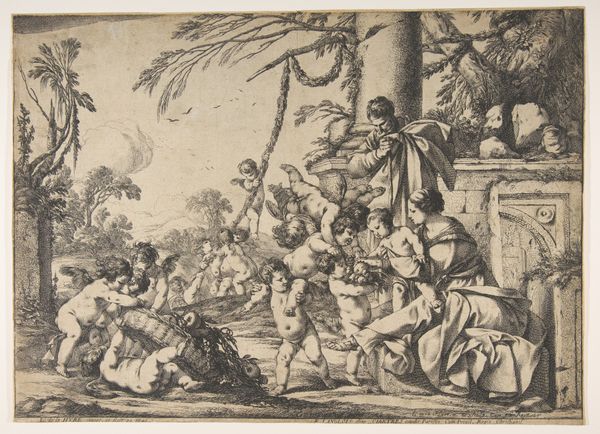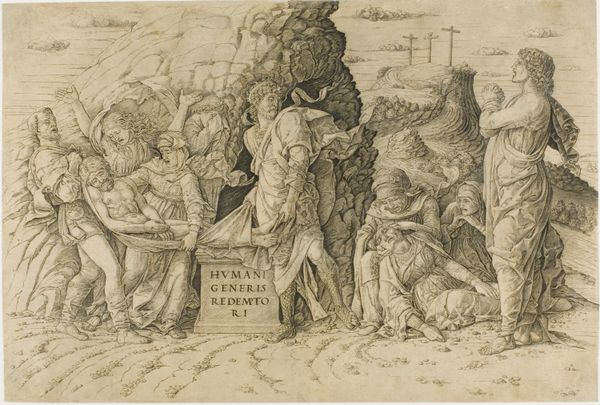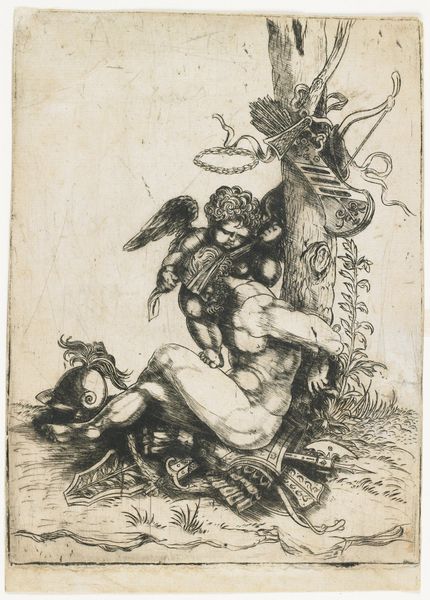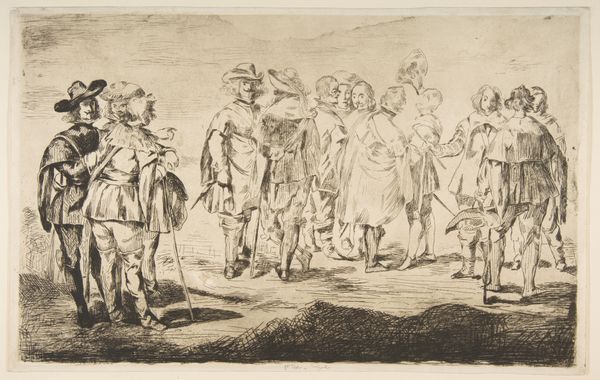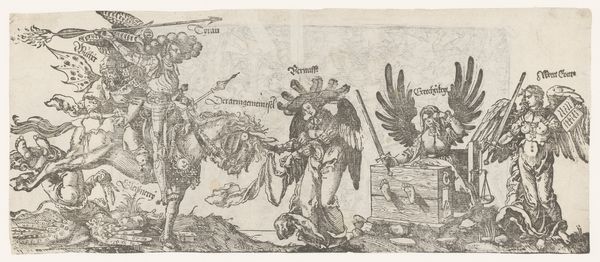
Dimensions: plate: 19.8 x 29.5 cm (7 13/16 x 11 5/8 in.) sheet: 21.2 x 30.9 cm (8 3/8 x 12 3/16 in.)
Copyright: National Gallery of Art: CC0 1.0
Curator: Look at this captivating etching, “Kneeling Pages, a Mask, and a Parrot,” created by Giovanni Domenico Tiepolo around the 1770s. There’s such detail for a printed work. What are your initial thoughts? Editor: My eye is immediately drawn to the parrot. It feels almost imposing, yet its placement seems so casual. I wonder about the availability of such creatures and the economic implications. Was owning an exotic pet just a status symbol, a marker of trade routes, or a symbol of colonization? Curator: Indeed. Parrots were often linked to knowledge and mimicry but here, perched above the figures, could it be seen as mimicking the elite it seems to judge, perhaps adding to the theatre depicted. The mask, too, represents illusion. These visual clues suggest deeper meanings about appearances versus reality within the wealthy circles of that time. Editor: And what about those pages? Their clothing looks very fine, meticulously detailed, perhaps the clothes were what denoted their relative social value rather than their origins. The weight of these clothes alone, so detailed in their etching! That indicates specific skilled labor required for producing not only the etched copper plate, but the outfits themselves, hinting towards material exploitation. Curator: These "pages" would certainly be in the service of some Venetian noble, as signifiers of exotic knowledge from foreign lands. In essence, Tiepolo creates a tapestry of symbols reflecting the exotic and the theatrical. The parrot, mask, kneeling pages all convey an atmosphere that might explore artifice and perhaps, social disparity of Baroque society. Editor: I'm also noticing how this composition prompts questions of skill – the skilled artisan creating ornate vases as mere decorative objects, and of course Tiepolo's labour making a printed artwork. Its circulation within the art world itself reflects systems of production and reception. Curator: It makes you think about how symbols speak to continuity—or disruptions—in our understanding of cultural heritage. Each viewer carries different meanings! Editor: Precisely, a convergence of materiality, labour, and cultural symbols.
Comments
No comments
Be the first to comment and join the conversation on the ultimate creative platform.


